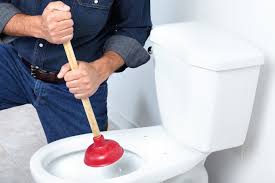A slow-draining toilet bowl is a common household issue that can lead to frustration and inconvenience. If you’ve noticed that your toilet bowl is slow to drain, it’s essential to address the problem promptly to avoid more severe plumbing issues. In this article, we’ll explore the causes, solutions, and prevention tips for a toilet bowl that drains slowly.Common Causes of a Slow-Draining Toilet Bowl
- Clogged Drain Pipe: The most common cause of a slow-draining toilet is a partial clog in the drain pipe. This can be due to toilet paper, hygiene products, or other debris.
- Mineral Buildup: Hard water can lead to mineral deposits accumulating in the pipes, restricting water flow.
- Vent Pipe Issues: The vent pipe allows air to enter the plumbing system, ensuring proper drainage. If it’s blocked, the toilet may drain slowly.
- Low Water Level: If the toilet tank isn’t filling correctly, it may not provide enough water to flush waste effectively.
- Sewer Line Problems: A blockage or damage in the main sewer line can affect multiple drains, including the toilet.
How to Fix a Toilet Bowl Slow to Drain
- Use a Plunger: A plunger can often dislodge minor clogs. Ensure you create a tight seal and use firm, consistent pressure.
- Try a Drain Snake: For deeper clogs, a drain snake (or auger) can reach further into the pipes to remove obstructions.
- Clean the Jet Holes: Mineral deposits can block the small holes under the toilet rim. Use a wire or vinegar soak to clean them.
- Check the Vent Pipe: If you suspect a vent pipe issue, inspect it for blockages like leaves or nests. A plumber may be needed for repairs.
- Inspect the Sewer Line: If multiple drains are slow, the sewer line might be the culprit. Professional assistance is recommended.
Prevention Tips to Avoid Future Issues
- Avoid Flushing Non-Flushable Items: Only flush toilet paper and human waste. Items like wipes, cotton balls, and feminine products can cause clogs.
- Regular Maintenance: Periodically clean the toilet and drain with a mild cleaner or vinegar solution to prevent buildup.
- Install a Water Softener: If you have hard water, a water softener can reduce mineral deposits in the pipes.
- Monitor Water Pressure: Ensure the toilet tank fills adequately after each flush to maintain proper drainage.
- Schedule Professional Inspections: Annual plumbing inspections can catch potential issues before they become major problems.
When to Call a ProfessionalWhile many slow-draining toilet issues can be resolved with DIY methods, some situations require professional help. If you’ve tried the above solutions without success, or if you notice recurring problems, it’s time to call a plumber. Persistent slow drainage could indicate a more serious issue, such as a collapsed pipe or tree root intrusion in the sewer line.ConclusionA toilet bowl slow to drain is more than just an annoyance—it can signal underlying plumbing problems. By understanding the causes and applying the right solutions, you can restore proper drainage and prevent future issues. Regular maintenance and mindful flushing habits will go a long way in keeping your toilet functioning smoothly.

